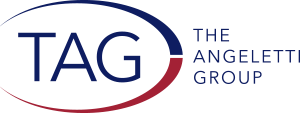As a fundraising consultant with a practice in the arts, culture, and public media, I’ve encountered organizations with compelling missions and established fundraising programs that are falling short of strategically advancing prospect relationships. In fact, it’s not uncommon to see large and relatively successful arts organizations neglecting a core fundraising strategy: a comprehensive prospect management system.
Prospect management is at its core a process for strategically building and advancing relationships toward a gift and is the foundation for exceptional fundraising programs. A CRM system with a robust prospect management module is an essential resource in moving those relationships through the donor cycle, ensuring that an organization is deploying a donor-centric approach to fundraising.
Leveraging Your CRM
There are several reasons why an organization might not be fully utilizing its CRM for prospect management. Day-to-day operations feel overwhelming. Staff turnover may have sidetracked attention. Short-term fundraising goals are being achieved. But ignoring the power of a CRM system to help you advance relationships means missing out on larger gifts in the long run.
Systems like Blackbaud NXT, Salesforce for Nonprofits, and Tessitura are built specifically to help you manage relationships at scale. When deployed correctly, they assist you intentionally moving prospects from initial interest to meaningful contributions.
Strategically advancing relationships requires that each of your frontline fundraisers has an assigned portfolio of prospects within your CRM. This accountability ensures transparency in the development operation and reinforces a donor-centric mindset in advancing key relationships toward a philanthropic commitment. This avoids missing opportunities, especially when turnover happens.
A vibrant prospect management process incorporates prospect managers developing individualized prospect plans, tracking moves (substantive actions), and capturing critical meeting outcomes (contact reports) in your CRM.
For organizations with membership programs, CRMs can create a separate pipeline for those lower-level prospects, often managed by a direct response effort. This allows your major gift officers to focus on high-value relationships while maintaining engagement with a broader audience.
Organize Your Existing Prospects
Assigning a donor stage to your current prospects is a necessary step in successful prospect management coupled with a strategic prospect plan. Most fundraising pipelines for organizations we counsel follow these key stages:
- Identification: Identifying prospective donors through research and analysis
- Qualification: Assessing the prospects’ interest and capacity to give via a discovery visit
- Cultivation: Building the relationship through intentional actions
- Solicitation: Asking for a specific gift
- Stewardship: Maintaining and strengthening the relationship
To better organize your prospects, we recommend employing wealth screening partnered with modeling or another analytical tool to focus attention on the relationships with the highest potential value.
Develop Strategic Plans for Each Prospect
A CRM can also help you outline a specific action plan for each prospect. These plans include the steps you’ll take at each stage to advance the relationship. For example, a goal for the cultivation stage might be to set a meeting with the prospect. Before each meeting, you should set clear objectives of what you intend to accomplish. Following the meeting, update the record with new information or insights about the prospect that were uncovered during the discussion and set a next step, such as inviting them to an upcoming performance.
While virtual meetings have become more acceptable post-Covid, face-to-face meetings remain the most powerful engagement tools. Use these opportunities to deepen relationships and move the prospects further down the pipeline.
Keep Your Pipeline Balanced
As a rule of thumb, your prospect portfolio should be balanced between qualifying new prospects, cultivation, solicitation, and stewardship. We recommend the following allocation of prospects by stage within your portfolio:
- 20% New Prospects: These individuals have been identified for potential, either through AI, wealth screening, or other tools, but haven’t been fully qualified.
- 30% Cultivation: At this stage, you’re advancing the relationship with substantive actions. What steps are you taking to deepen their engagement? Meeting in person, giving them a tour, or inviting them to a performance are all powerful cultivation actions.
- 30% Solicitation: These are prospects you’ve built a relationship with and are ready to make an ask. Track your solicitation efforts in your CRM to ensure timely follow ups. Keep an eye on the “age” of solicitations.
- 20% Stewardship: These are donors who have already given, and now your focus is on keeping them engaged with reports on the impact of their gift and further cultivation for additional or larger gifts.
Track Progress and Set Goals
A CRM can provide invaluable insights into how your efforts are progressing. Set measurable goals—whether it’s advancing 20-30% of your prospects each year from one stage to the next, holding 15-30 face-to-face meetings per quarter, or closing 12-15 gifts annually. Use your dashboard to track whether you’re hitting these targets, meeting regularly as a development team to review and adjust as needed.
At the end of the day, a prospect management system employing your CRM helps you stay focused and organized, ensuring that you’re continuously moving prospects through the pipeline and cultivating relationships that will lead to larger, more consistent gifts.
Final Thoughts
If your organization hasn’t embraced the full potential of a prospect management system, now is the time to start.
A prospect management process rooted in your CRM will focus your team on what matters—building lasting relationships that lead to impactful gifts for your organization. It will make your fundraising efforts strategic and efficient.
Fundraising is about managing relationships, and those relationships take time and strategy to grow. Prospect management helps you avoid getting bogged down by daily tasks and ensures you’re always moving your prospects forward.
Arts, Culture and Media Philanthropic Advisors can help you develop a tailored prospect management system which fully utilizes your CRM to move prospects through your pipeline more efficiently.
Contact: Peter H. Hansen peter@acmphilanthropy.com


